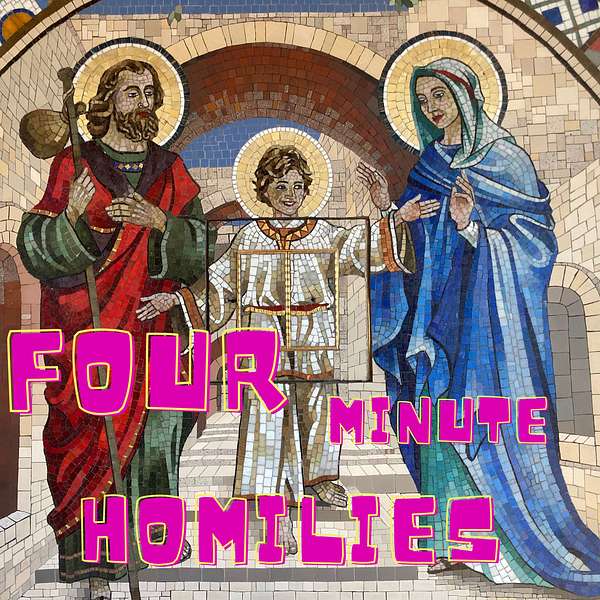
Four minute homilies
Short Sunday homilies. Read by Peter James-Smith
Four minute homilies
Fifth Sunday of Lent The adulterous woman
Lent 5 C The adulterous woman
Saint Augustine defines the meeting between Jesus and the adulterous woman with this great expression: Misera et Misericordia, Misery and Mercy, the wretched woman and the merciful Jesus, the sinner and God, sin and grace. Pope Francis calls his Apostolic Letter at the conclusion of the Jubilee of Mercy, Misericordia et Misera. He turns them around, emphasizing love and forgiveness above sin and justice: “the misery of sin was clothed with the mercy of love.” There they meet, one in front of each other, Mercy and Misery, Jesus and the adulterous woman. It’s a beautiful scene, a meeting between humanity and divinity, our sinfulness and God’s healing power.
When he tells the Pharisees, “let him who is without sin among you be the first to throw a stone at her”, you can hear the stones hitting the ground, beginning with the older ones, perhaps the same ones that sinned with her. They all leave when they read what Jesus is writing on the ground: “Where is the man who sinned with her? Is there any man here without sin?” Jesus has no stones to throw at her, even though he is the only one who has the right to do so. We hear the same words when we come to meet Jesus: Let the stones slip through your fingers. Why do you keep those grudges in your heart? Those stones are too heavy. We are the same as the Pharisees.
There they are, all alone, Jesus and the beautiful woman, with her dark hair falling over her shoulders, covering her nakedness, concealing her sins. The sun is shining high on the sky, God’s light who makes old things new, who reveals all hidden things. He continues writing on the ground. Now he writes for her, “Where are they?” She is looking at him with curiosity, trying to figure him out: “Who is this man?” She thought she knew who men were. Jesus lifts his eyes and looks at her for the first time, with tenderness and compassion; their eyes meet. His eyes are not the same as of the other men. It is a great moment to see both looking at each other at the same time. Misericordia and Misera meet, a man-God and a woman-sinner. Even though in real life this is not possible, because we have only one set of eyes, it is possible to do it now, and penetrate deeply in both gazes, she is us, He is God’s own. It is the same gaze we experience when we come to Mass and the penitential rite begins. We are there in front of him occupying the place of the adulterous woman, with more reasons to be stoned to death: “I confess to Almighty God and to you here present that I have gravely sinned.” We need to look at Jesus in the eye.
Jesus asks her, after a long silence, looking around: “Has no one condemned you?” Her voice sounds for the first time, a singing voice, full of contrition: “No one, Lord.” She calls him Lord: “Now I know who you are. I have seen through your eyes and discovered the depths of your mercy. I thought I never could see that in a human being.” Jesus allowed her to look inside his heart, at the same time that he was healing hers. We can take the place of Jesus: we have so many things to forgive and forget.
She waits with expectation Jesus’ answer, even though she knows what he is going to say. With a consoling smile, he says: “Go, and do not sin again.” Two commands in one sentence. Go, you can go now, look at the future, don’t worry about your past, forget what lies behind and run forward. We hear the same words when we go to confession: “Go in peace! Run!” There is a famous saying: every saint has a past and every sinner has a future. And his second command: “Don’t be silly!”
josephpich@gmail.com